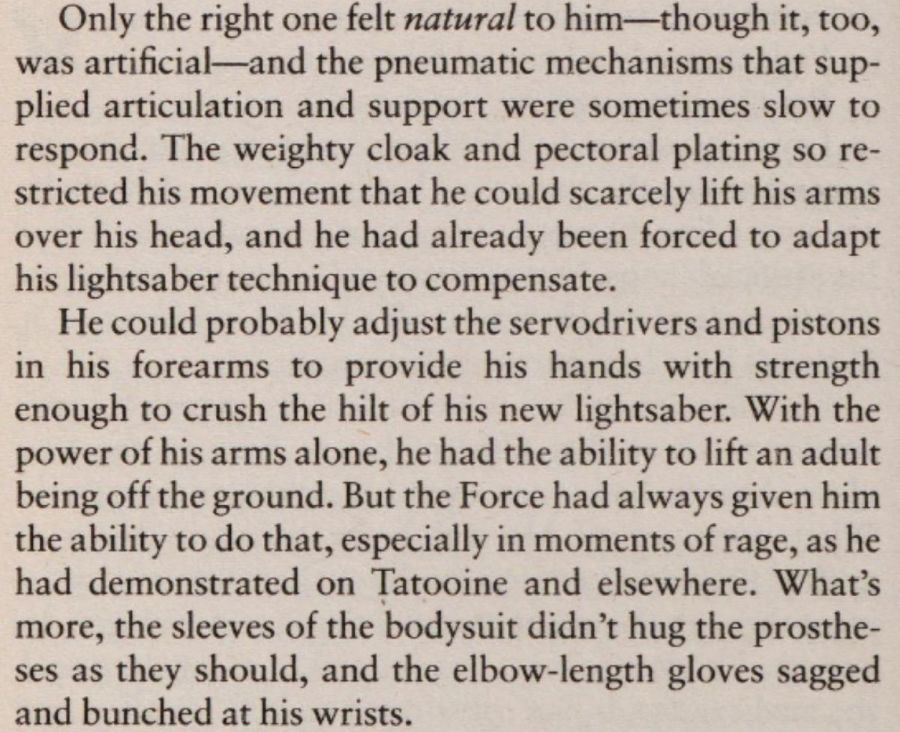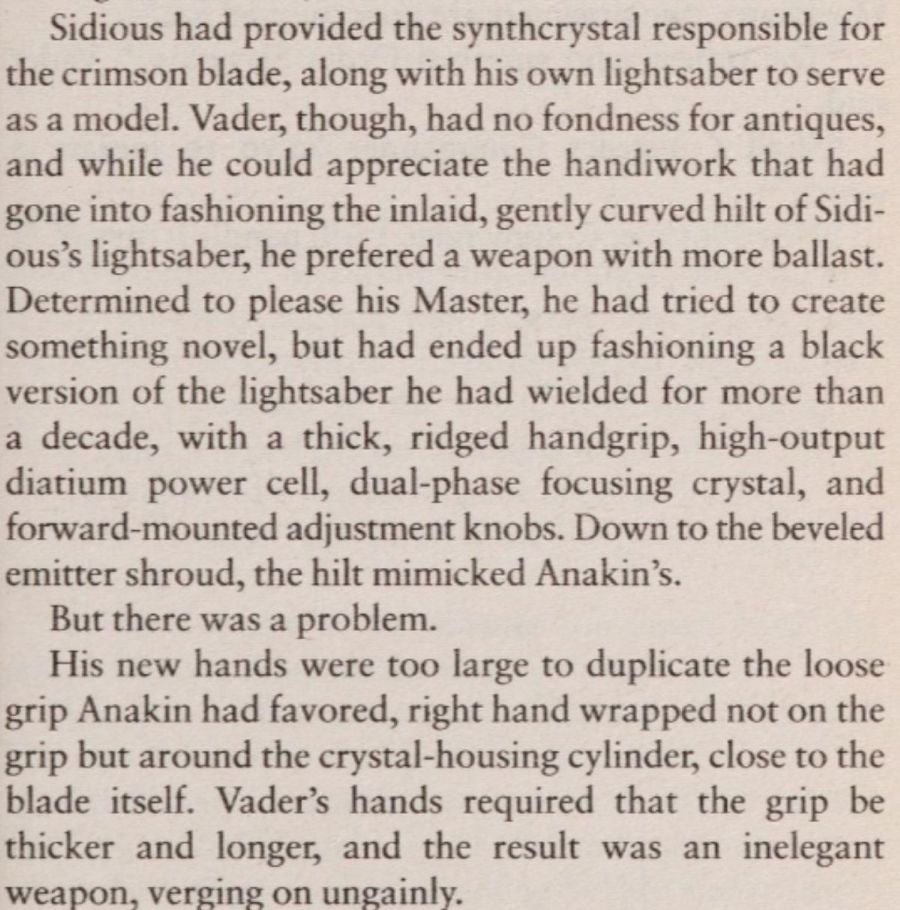If you’ve ever looked closely at Darth Vader’s red-bladed lightsaber, you might’ve noticed something a little strange—it looks a lot like Anakin Skywalker’s old Jedi weapon. Same grip shape, same emitter guard, even that signature boxy control switch on the hilt.
Now, I know the first thing people will say is, “Well, duh, Vader is Anakin, of course it looks the same.” And yeah, that makes sense on the surface. But think about it. By the time Anakin became Vader, he hated the Jedi. He burned the Temple, slaughtered his old allies, and swore loyalty to the Sith. So why would he build a lightsaber that looks exactly like the one he used as a Jedi—a weapon that should remind him of everything he wanted to destroy?
Well, one reason? His new armor. That bulky, restrictive suit the Emperor slapped on him after Mustafar didn’t just change how he fought, it changed how he built his new weapon.
He Needed a Lightsaber That Could Survive His Own Strength
One big reason Darth Vader’s lightsaber hilt looks so similar to Anakin’s old one is simple: his new armor completely changed how he moved. After Mustafar, everything became harder walking, fighting, even basic movements. The suit was heavy, stiff, and clunky. Vader had to consciously use strength just to swing his lightsaber like he used to. It wasn’t fluid anymore; every move took effort.
Now, back in the Clone Wars, when Anakin lost his original lightsaber in Attack of the Clones, he rebuilt it with a new design, one better suited for his aggressive, strength-heavy fighting style. That lightsaber was built for power, not finesse.
So when Vader had to craft a new weapon, it made sense to stick with something familiar. Something that could handle the brute force required to fight in that hulking armor. And it turns out that design, similar to Anakin’s, was the best fit for his new reality.
The Legends novel Dark Lord: The Rise of Darth Vader backs this up. There’s a line that really spells it out:
“The weighty cloak and pectoral plating so restricted his movement that he could scarcely lift his arms over his head, and he had already been forced to adapt his lightsaber technique to compensate.”
And even more telling:
“He could probably adjust the servodrivers and pistons in his forearms to provide his hands with strength enough to crush the hilt of his new lightsaber.”

Vader’s New Lightsaber Was Basically a Darker Copy of His Old One
As the novel later reveals, once Vader was adjusting to life inside his new armor, he began the process of crafting his Sith lightsaber. Sidious provided him with a synthetic red crystal, your classic Sith staple, and even offered up his own lightsaber as a reference. Palpatine’s hilt was a refined piece of work: inlaid, gently curved, clearly made with elegance in mind. Vader respected it, sure, but “he had no fondness for antiques.” That kind of saber didn’t match the brute force he now relied on.
Vader wanted something with ballast—something solid that could match his new combat style. He did try to get creative, to “create something novel” and show Sidious he wasn’t just clinging to the past. But as the book puts it, “he had ended up fashioning a black version of the lightsaber he had wielded for more than a decade.”
It was nearly identical to Anakin Skywalker’s: “with a thick, ridged handgrip, high-output diatium power cell, dual-phase focusing crystal, and forward-mounted adjustment knobs.” Even the “beveled emitter shroud” was back. It didn’t just resemble Anakin’s saber, it was Anakin’s saber in spirit, just darker and deadlier.

So why did he go back to something so familiar, even after trying to move on? It wasn’t just nostalgia. It was functionality. That old hilt had been part of Anakin’s most brutal, high-intensity fights. It was made for a duelist who relied on power, aggression, and instinct, traits Vader had to double down on now that his armor limited agility and forced him to rely more on brute strength. That familiar design, and it worked. And for a warrior like Vader, efficiency mattered more than symbolism.
Vader Built His Lightsaber After Donning the Armor in Canon
In Star Wars canon, we actually see the moment Darth Vader constructs his red lightsaber, and it doesn’t happen until after he’s already suited up in the armor. The scene plays out in Darth Vader (2017) #5 by Charles Soule, where Vader, fresh off bleeding a kyber crystal taken from Jedi Master Kirak Infil’a, begins crafting his new weapon.
Still recovering from his injuries on Mustafar, Vader assembles the saber while aboard his starship, using the Force to guide its construction. It’s a quiet but powerful moment—he’s no longer Anakin Skywalker trying to repair the past. This is Vader, fully transformed, forging a weapon that reflects his rage and identity as a Sith. The comic even shows him presenting the finished saber to Palpatine, who approves of the design.
Then, in Darth Vader (2017) #12, we get a follow-up to that. Palpatine asks to see Vader’s lightsaber—and immediately notices that it still resembles a Jedi’s weapon. Palpatine, being Palpatine, isn’t too thrilled about that. He wants Vader’s saber to fully reflect his new identity as a Sith. This moment pushes Vader to refine the design, modifying the hilt and upgrading it to better match his style, strength, and role.

